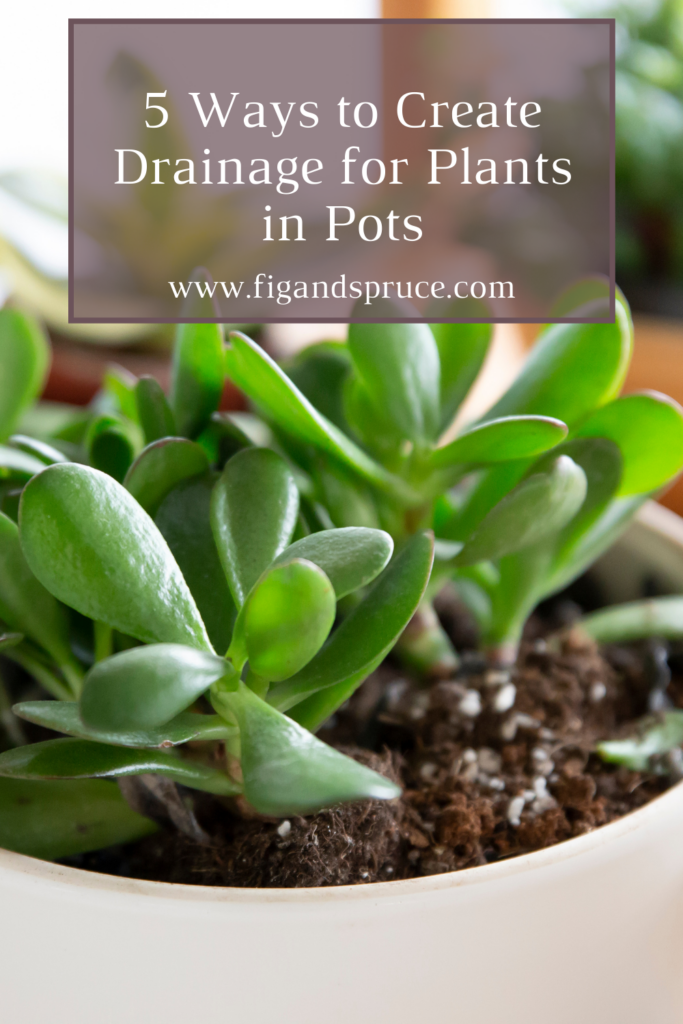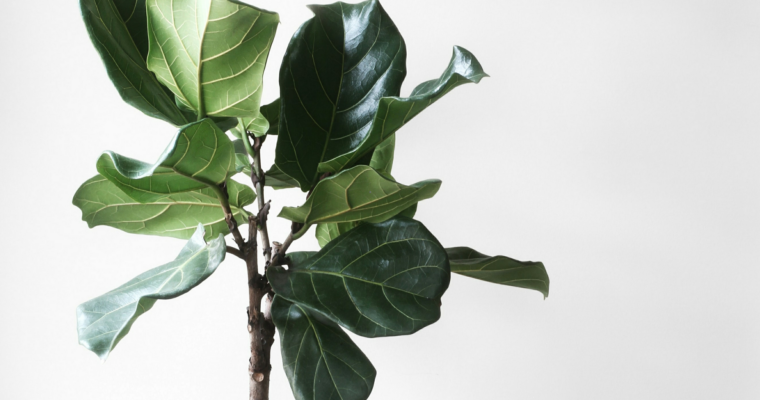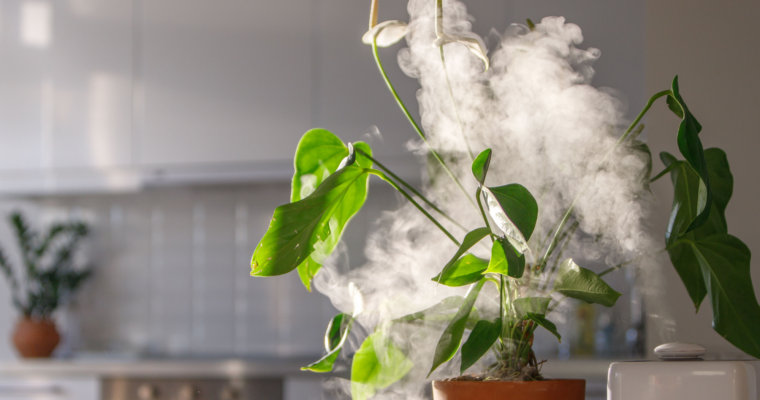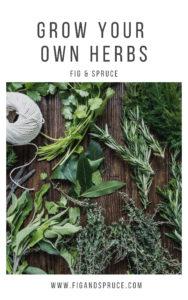Learning how to create drainage for plants is an essential skill to have when you’re dealing with potted plants. Sometimes it seems like an unwritten rule that the best plant pots have zero drainage holes.
This means that you have to get creative and find other ways of getting drainage for plants in your home. We’re covering our top ways to do that today!
Table of Contents
Why is drainage for plants important?
When gardening in containers, your plants are susceptible to a number of pitfalls that you don’t run into when creating an in ground garden.
One of the most common pitfalls of new container gardeners (or even seasoned ones) is not getting enough drainage for plants in their garden. Without proper drainage your plants will end up sitting in containers that are saturated with water. This exposes your plants to the potential for root rot, which is a disease where your roots rot and decay from the excess moisture.
How to Create Drainage for Plants in Pots
Select the Right Growing Medium
Our first method of creating drainage for plants is to select a growing medium that will work with you, not against you. Leca is a good example of a medium that will enhance drainage for your plant.
Often potting soil over time can get compacted and dense, making it more likely that your plant will end up with sitting water at the bottom of the pot. This exposes it to all of the nasty side effects mentioned earlier like root rot, fungal gnats, and more.
Leca is a grow medium that will provide both aeration for your plant and drainage. Leca is made up of balls of clay that actually expand and soak up water as you water your plant. It then acts somewhat like a sponge and lets your plant pull water from the clay as its thirsty.
If you’re interested in a full guide on how to use leca, check out our beginners guide here.
Mix your Soil with Perlite or Coco Peat
Lets say you’re not into leca as a grow medium. Another method to create drainage for plants is to mix your potting soil with materials like perlite or coco peat.
Perlite is an ingredient you often see mixed into potting soil already. Perlite is a naturally occurring material made up of volcanic glass. It adds drainage and creates more aeration in the soil, which your plant’s roots will love.
Coco peat is a little less common to see mixed into potting soil, but we like it just as much as (if not more than) perlite. Coco peat is made from coconut husks. You’ll sometimes see this in high quality soil mixes, but its not as common as other materials. Coco peat provides aeration and drainage in the same way perlite does. For a full scoop on the pro’s and con’s of coco peat, check out our coco peat guide.
Create a layer of gravel at the base
One of the more straightforward ways of creating drainage for plants is to add a layer of pebbles to the bottom of the pot. By adding a layer of pebbles before you add soil or your plant, it will allow the water to drain from the soil over time.
This will prevent your plants from sitting in water every time you water them. This excess moisture is what causes root rot in plants, and can lead to a bunch of other negative side effects for your plant.
Use the temporary plastic planter
A DIY way to create drainage is to save the plastic temporary planter that your plant comes in when you purchase it. Take this planter, turn it upside down and place it in your pot. then fill your pot as normal with soil and your plant.
You may need to trim your plastic planter down a little bit to ensure it fits. This method also reduces the space inside your pot so you’ll want to monitor and make sure your plant has room for its roots to grow.
Drill holes in your planter
The last method is probably the most obvious. If you want to create drainage in a pot that does not have drainage holes, you can simply drill them into the bottom of your planter.
This method can be problematic for a couple of reasons. Depending on what type of material your pot is, it can crack or break under the pressure of drilling.
Another potential issue is if you’re keeping your plants indoors, a drainage hole can allow water to leak onto your floor. If you’re dealing with indoor plants, we recommend another method to keep your floors protected from excess water runoff.




